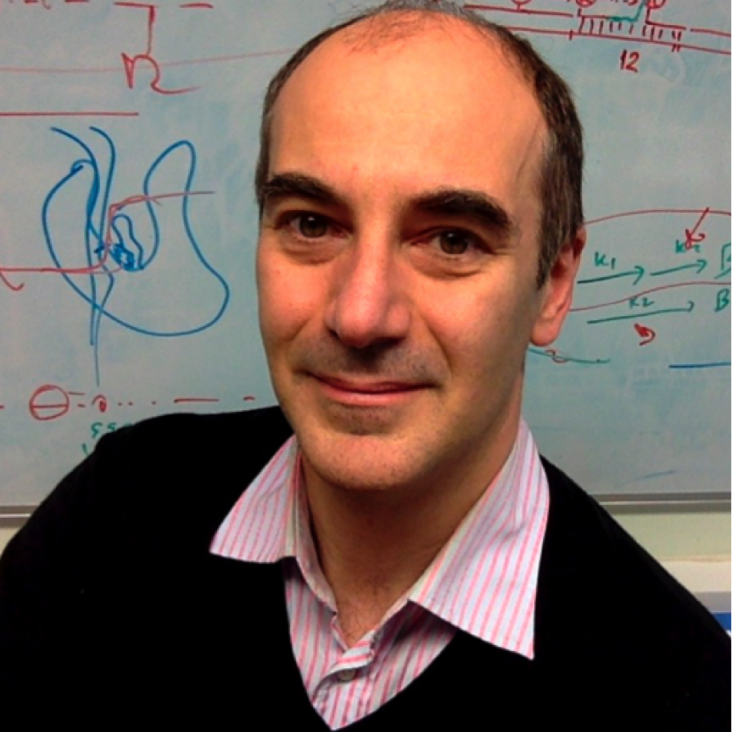Closing and opening of the RNA polymerase trigger loop
Proceedings of the National Academy of Sciences National Academy of Sciences 117:27 (2020) 15642-15649
Abstract:
The RNA polymerase (RNAP) trigger loop (TL) is a mobile structural element of the RNAP active center that, based on crystal structures, has been proposed to cycle between an "unfolded"/"open" state that allows an NTP substrate to enter the active center and a "folded"/"closed" state that holds the NTP substrate in the active center. Here, by quantifying single-molecule fluorescence resonance energy transfer between a first fluorescent probe in the TL and a second fluorescent probe elsewhere in RNAP or in DNA, we detect and characterize TL closing and opening in solution. We show that the TL closes and opens on the millisecond timescale; we show that TL closing and opening provides a checkpoint for NTP complementarity, NTP ribo/deoxyribo identity, and NTP tri/di/monophosphate identity, and serves as a target for inhibitors; and we show that one cycle of TL closing and opening typically occurs in each nucleotide addition cycle in transcription elongation.The FRET-based structural dynamics challenge -- community contributions to consistent and open science practices
(2020)
Single-molecule Analysis Reveals the Mechanism for DNA Opening in Transcription Initiation
Biophysical Journal Elsevier 118:3 (2020) 29a
Unravelling the reaction mechanism and kinetics of dnazymes based on bulk and single molecule studies
MicroTAS 2020 - 24th International Conference on Miniaturized Systems for Chemistry and Life Sciences (2020) 1109-1110
Abstract:
In this work we present a mathematical approach to model the kinetic behavior of DNA enzymes (DNAzymes) in order to predict their activity, which will assist future sequence designs. The model has been designed based on multiple previous reports since no general reaction mechanism has been fully described for DNAzymes to date. To better understand this, we also present first of its kind study of the DNAzyme catalytic reaction at the single molecule (SM) level.Rapid functionalisation and detection of viruses via a novel Ca2+-mediated virus-DNA interaction
Scientific Reports Nature Research 9 (2019) 16219


